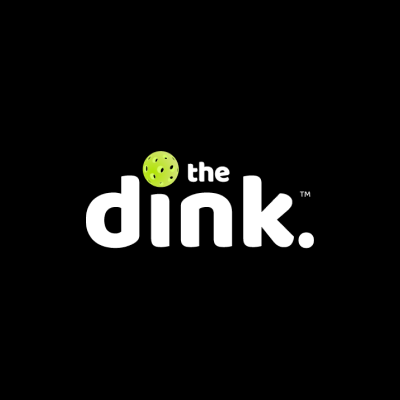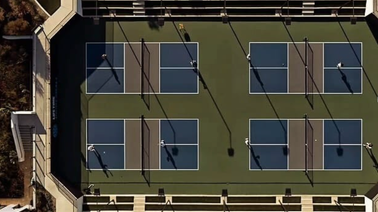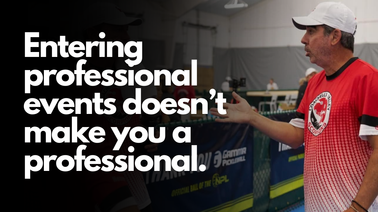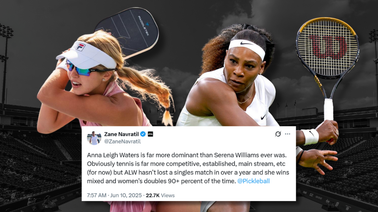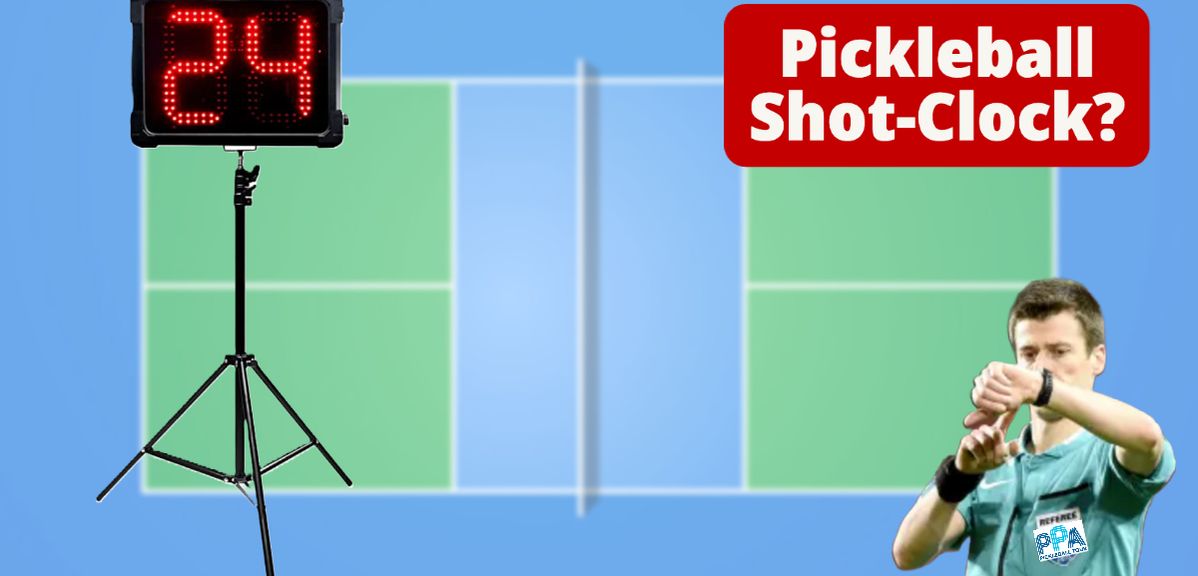
The average pro pickleball game consists of about 40 rallies. But is that too long for the game to receive better television ratings?
Players and fans alike seem to enjoy the fast-paced, competitive nature of the sport. However, there has been some debate about whether or not a shot clock should be implemented in pickleball games to speed up the pace of play.
One of the main arguments in favor of a pro pickleball shot clock is that it would shorten the length of games and make them more predictable in terms of duration, something Major League Pickleball is attempting to accomplish with their Rally Scoring system.
Proponents argue that this would make the sport more appealing to television networks and viewers, as they would have a better idea of how long a match would last.
However, opponents of the shot clock argue that this would take away from the unpredictability and excitement of pickleball games.
In a recent episode of PicklePod, we discussed the pros and cons of adding a shot clock to pro games. We break them down below.
Anti shot clock: it's a variability issue
Those against adding a shot clock say the issue is one of variability.
The variability in pro pickleball game length is what makes the sport so thrilling. In traditional scoring, games can range from 35 to 100 points, while in rally scoring, games typically range from 36 to 45 points.
This variability adds an element of unknown to the game, as players and viewers never know exactly how long a game will last.
This unpredictability keeps the sport exciting and maintains viewers' interest throughout the game.
Another argument against the shot clock is that it would penalize players who excel at long rallies and defensive play.
Pickleball rewards players who can outlast their opponents in long rallies. Implementing a shot clock would force players to rush their shots and may discourage longer rallies, which are often the highlight of pickleball matches.
Long rallies can create intense moments of anticipation and excitement for players and fans alike, and taking away this aspect of the game could detract from the overall enjoyment of pickleball.
Plus, players' eyes are constantly glued to the ball, and taking their attention away from the ball to check a shot clock would be distracting and potentially lead to errors in play.
The weight of these anti-clock arguments seems too heavy to bear, especially considering the lack of current positive opinions in favor of it.
If you have a home court and want to help solve pickleball's OTHER biggest problem – lack of courts – while making money, we've got the solution for you.

Make money by listing your home court for rent. Learn more here.
Pro shot clock: standards matter
Proponents of the shot clock argue that other sports like basketball and football have clocks, and the pace of play can vary depending on the situation.
For example, if one team has a significant lead in a basketball game, there may be fewer timeouts and fouls, resulting in a faster-paced game.
On the other hand, if the game is close, there may be more timeouts and fouls, leading to a slower pace of play.
Really, the most prominent opinion in favor of a shot clock relies on the notion that it is important to grow the sport via television/streaming views.
Theoretically, additional viewership could be gained through additional standardizations in the sport.
But are those proposed standards antithetical to what makes pickleball different in the first place?
If you want to keep up with everything pickleball, you’ve got to sign up for our newsletter. We break news faster than anyone in the game. Subscribe below:


